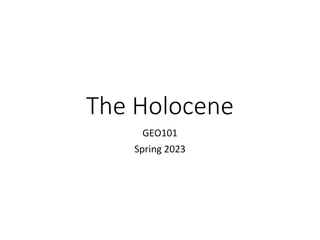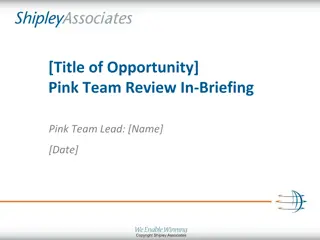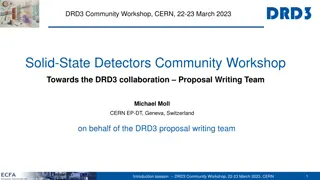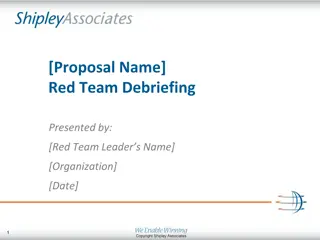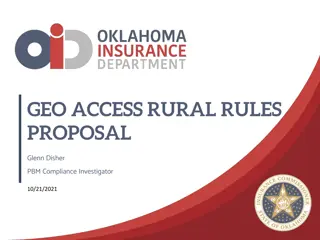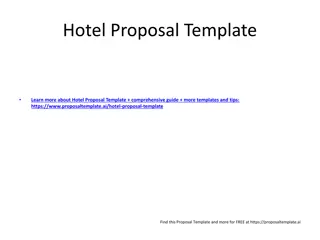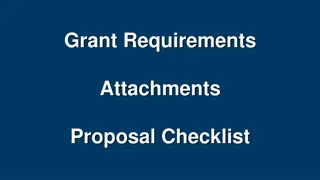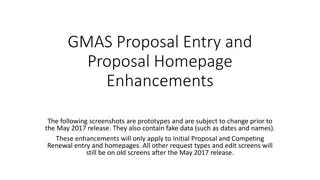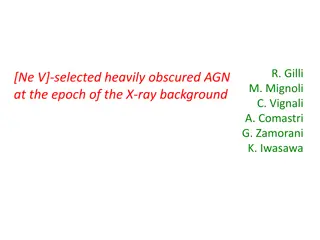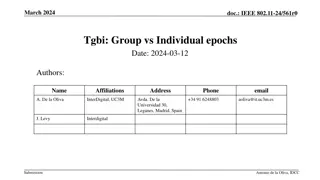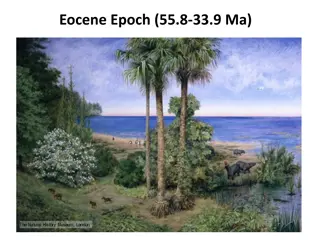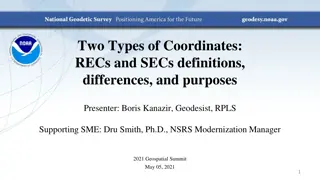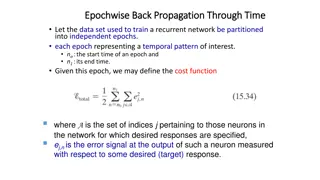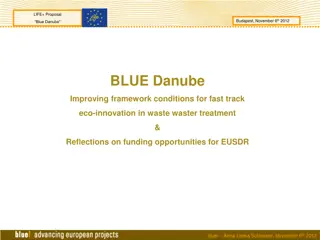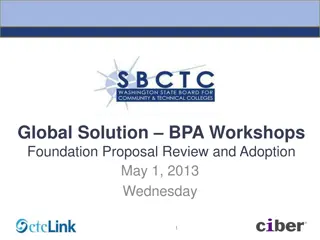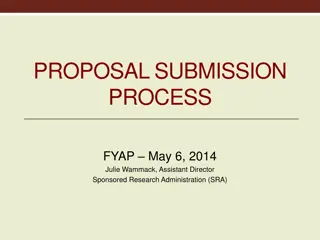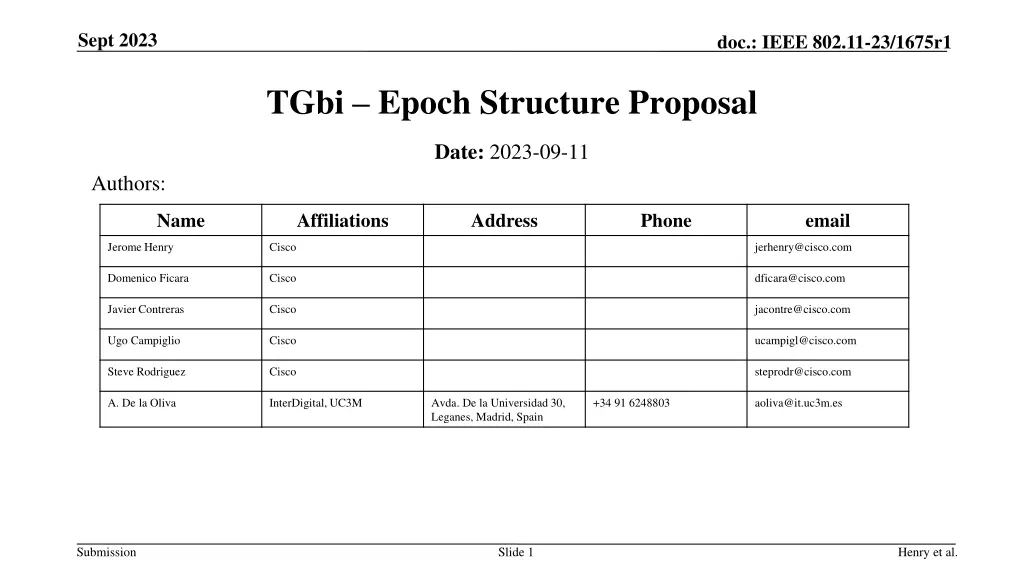
IEEE 802.11-23/1675r1 TGbi Epoch Structure Proposal
This document proposes a flexible structure for epochs in IEEE 802.11-23/1675r1, allowing each CPE client to have unique epoch duration needs based on factors like mobility, privacy requirements, and resource constraints. Individual MAC rotations are favored over mass rotations to enhance security and make it difficult for eavesdroppers to detect patterns. The proposal emphasizes the importance of defining epochs to regulate MAC address rotations effectively.
Download Presentation

Please find below an Image/Link to download the presentation.
The content on the website is provided AS IS for your information and personal use only. It may not be sold, licensed, or shared on other websites without obtaining consent from the author. If you encounter any issues during the download, it is possible that the publisher has removed the file from their server.
You are allowed to download the files provided on this website for personal or commercial use, subject to the condition that they are used lawfully. All files are the property of their respective owners.
The content on the website is provided AS IS for your information and personal use only. It may not be sold, licensed, or shared on other websites without obtaining consent from the author.
E N D
Presentation Transcript
Sept 2023 doc.: IEEE 802.11-23/1675r1 TGbi Epoch Structure Proposal Date: 2023-09-11 Authors: Name Affiliations Address Phone email Jerome Henry Cisco jerhenry@cisco.com Domenico Ficara Cisco dficara@cisco.com Javier Contreras Cisco jacontre@cisco.com Ugo Campiglio Cisco ucampigl@cisco.com Steve Rodriguez Cisco steprodr@cisco.com A. De la Oliva InterDigital, UC3M Avda. De la Universidad 30, Leganes, Madrid, Spain +34 91 6248803 aoliva@it.uc3m.es Submission Slide 1 Henry et al.
Sept 2023 doc.: IEEE 802.11-23/1675r1 Background - Epochs Epochs were discussed in 11-23/0873 and 11-23/1246. Epochs define time periods at the edge of which a CPE client rotates its MAC address This document suggests several mechanisms for the implementation of epochs Submission Slide 2 Henry et al.
Sept 2023 doc.: IEEE 802.11-23/1675r1 Epoch is a Flexible Structure Each CPE client may have different epoch duration needs STA1 moving about the floor may need to rotate MAC(s) at each roam STA2 is mostly dozing state may not need to rotate MAC(s) often STA3, set for high privacy, may need to rotate its MAC(s) often STA4, with limited privacy requirements, and/or internal constraints (resources, power), may need to rotate its MAC(s) less often Changing Epoch for all CPE clients at the same time may simply provide a linear translation from MACs to MACs If all STAs change MAC at the same time, an eavesdropper guesses that there is no new STA, juts a mapping need between a fixed set of STAs MACs If MACs appear and disappear at random times, it is more difficult to know if a STA changed its MAC, or if a STA appeared/went away Submission Slide 3 Henry et al.
Sept 2023 doc.: IEEE 802.11-23/1675r1 Why Individual Rotations are Better than Mass Rotations AP Mmm all STAs MACs suddenly changed -> obviously MAC rotation. Can I find patterns to map MACi to MACj along time axis? Frame type Data MAC1 MACn Mass rotation tells the observer that there was a rotation, just needs to find the patterns MAC2 Visible over some time interval ? ???12 Then, suddenly . ???2 = Frame type Data MACn+1 MACn+n n new MAC addresses, all first MAC addresses suddenly disappeared MACn+2 Because both send 160-byte frames , both send at 20 ms interval etc. vs. Frame type Data MAC1 MACn MAC2 Individual rotation makes it harder to tell a rotation from a new MAC Mmm MACs appear and disappear all the time, some are rotating, some may be new, but which ones? Visible over some time interval MACn+1 MAC2 Submission Slide 4 Henry et al.
Sept 2023 doc.: IEEE 802.11-23/1675r1 The Edge Of an Epoch is Soft, but Defined MACc MACp Conversations deriving from 11-23/1246r1 proposal MACc = current MAC, MACp = previous MAC, MACn = next MAC For a given CPE Client MAC, from exactly the beginning of a new epoch (from the CPE client perspective*), any new MPDU generated by the STA is sent with MACc Any MPDU already in the transmit queue (with MACp) continues being transmitted with MACp (including retries) Unless lifetime or retry limit is reached (10.3.4.4) Unless MACp lifetime is reached (new proposal) Simultaneous use epoch *See when does an Epoch start slide - the AP can start, the STA can start, but the STA should start Submission Slide 5 Henry et al.
Sept 2023 doc.: IEEE 802.11-23/1675r1 Per-CPE Client Epoch Start On-Demand MAC rotation is subject to AP and CPE Client capability limitations An AP may not be able to handle CPE Clients rotating their MAC, say, every 10 ms Different CPE Clients may have different MAC rotation capabilities A CPE Client privacy may be more at risk in a public venue than a private venue The CPE Client may not have awareness of the venue type A CPE Client should decide of its MAC rotation pace, but it should also account for the AP ability to handle that pace Submission Slide 6 Henry et al.
Sept 2023 doc.: IEEE 802.11-23/1675r1 An Epoch Interval Suggestion Proposal: after the CPE Client completes its 4-way handshake, and after reassociation, the AP sends to the CPE Client an Epoch duration proposal action frame. The frame includes: A proposed Epoch minimum duration (e.g., 10 seconds) A proposed Epoch maximum duration (e.g., 20 minutes) A proposed Epoch max frame count? Optionally, the AP MACp timeout (e.g., 2 seconds) Beyond that time (after epoch boundary), the AP flushes the CPE Client MACp Optionally, a starting side random Boolean (e.g., 0 = AP, 1 = CPE Client) Submission Slide 7 Henry et al.
Sept 2023 doc.: IEEE 802.11-23/1675r1 An Epoch Interval Suggestion The Epoch duration proposal action frame is a proposal. The CPE Client is free to select a MAC rotation random timer within the proposed interval, or not. The risk for the CPE Client is that the AP may not be able to sustain its pace if rotation is too fast, or have privacy exposure if rotation is too slow If Sta does not keep track of the timer, AP could send a reminder frame ( you should rotate your MAC now/soon ) Submission Slide 8 Henry et al.
Sept 2023 doc.: IEEE 802.11-23/1675r1 When does an Epoch Start MACn may have been exchanged beforehand (both sides know MACc and MACn) or both side can compute a valid MACn This proposal does not constrain how MACn is determined The next epoch starts as soon as the CPE Client starts using MACn The CPE Client may wake up, check its clock, and decide that next epoch has started Conceptually, either side could start using MACc, the other side receives the frames and determines that it is valid -> next epoch starts. However, this scheme removes the freedom from the CPE Client side The first frames in a new epoch could be authentication and association frames These frames are for the confusion of the eavesdropper Without them, MAC 1 just rotated becomes obvious Submission Slide 9 Henry et al.
Sept 2023 doc.: IEEE 802.11-23/1675r1 Why First Epoch Frames Are Auth/Assoc Frame type Mgnt, subtype auth MAC1 Frame type Mgnt, subtype assoc Frame type Data Frame type Data Frame type Data A data frame from a new MAC without auth/assoc? Quite obviously a MAC rotation (not a new STA), let s see which other MAC stops being used MAC2 ? ???1 ???2 = Submission Slide 10 Henry et al.
Sept 2023 doc.: IEEE 802.11-23/1675r1 How Many MACs per STA per Epoch 11-23/1628 suggested that a STA may have more than one MAC. This scheme is compatible with this submission. STA MAC count could be negotiated at initial association (and/or later) Then the principles in this proposal could apply to each STA MAC Epoch applies to all MACs STA changes its MAC(s) within each Epoch (at random times that the STA decides, within the Epoch) Submission Slide 11 Henry et al.
Sept 2023 doc.: IEEE 802.11-23/1675r1 Summary MAC changes should occur at epoch boundary, each STA may define its own epoch AP and STA can agree on Epoch durations For a MAC rotation to be undistinguishable from a new association, the same frames should be observed Submission Slide 12 Henry et al.
Sept 2023 doc.: IEEE 802.11-23/1675r1 Strawpoll Do you agree that epochs should also be individual (i.e., each CPE Client has its own epoch negotiated with the AP)? Y:9 N:1 Abs:3 No answer:2 Submission Slide 13 Henry et al.
Sept 2023 doc.: IEEE 802.11-23/1675r1 Strawpoll Do you agree that a CPE Client MAC address change should optionally be obfuscated by additional signaling? Y:3 N:6 Abs:4 No answer:2 Submission Slide 14 Henry et al.
Sept 2023 doc.: IEEE 802.11-23/1675r1 Strawpoll Do you agree on working on a solution for MAC address changing, in which the STA is allowed to use more than two active OTA address per epoch and per link? Y:2 N:6 Abs:6 No answer:2 Submission Slide 15 Henry et al.

